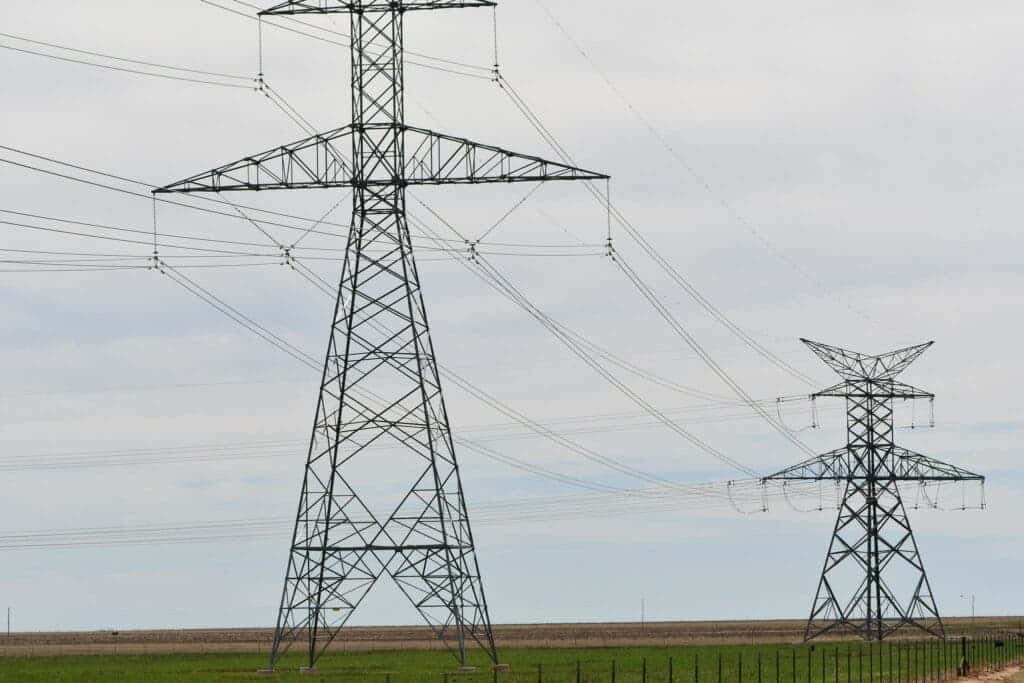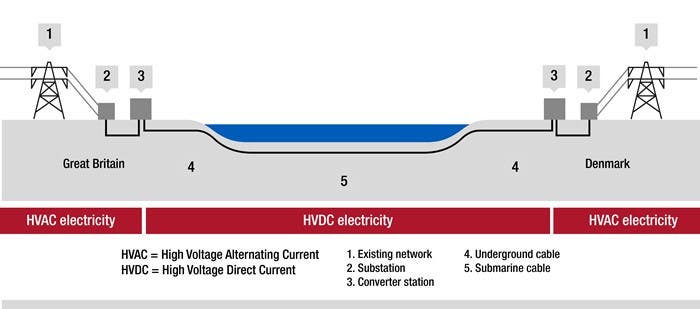The new Viking Link will allow the two countries to share renewabe energy.

The construction of the world’s longest subsea power cable has officially started, which will allow the United Kingdom and Denmark to share clean power and also lower their carbon emissions. Work has already kicked off on both sides of the project, with the goal of fully completing the entire endeavor in about three years.
The subsea power cable, known as the Viking Link, will go from Lincolnshire in eastern England to Revsing on the Jutland peninsula in Denmark. It’s a joint venture between the UK’s National Grid and the Danish electricity operator, Energinet, with the participation of the German multinational Siemens Energy.
Converter stations will be built in each country, occupying five hectares as each, as well as installing submarine and underground cables between each station. The submarine cables will be buried in the sea bed and will pass through UK, Dutch, German and Danish Exclusive Economic Zones (EEZs).
At the same time, the onshore cable routes will, for the British part of the project, be approximately 55 kilometers, and for the Danish part of the project be approximately 75 kilometers long. The onshore cables and the fiber optic cables will be buried in one single cable trench.
“Not only will [the Viking Link] create local green-collar jobs across the county, but it will also bolster our energy security, reduce bills for consumers, and give our home-grown renewable generators a greater chance to export zero-carbon electricity around the world,” said in a statement the UK Minister for Energy and Clean Growth, Kwasi Kwarteng.
The UK was the first country to pass laws committing to achieving net-zero emissions by 2050. As well as working to reach that target, the country plans to create thousands of so-called green-collar jobs. Grants will be allocated to cover the cost of improved heating, insulation and the installation of solar panels and wind turbines around houses, offices and schools.
Meanwhile, Denmark also has some ambitious environmental targets, such as reducing carbon emissions by 70% by 2030. Last year the country obtained half its electricity consumption from renewables, mainly wind power, which will now power the electricity for the Viking Link. Denmark is also a leader in wind turbine manufacturing and it often enjoys a surplus of energy on when the wind is particularly active
The project is expected to become operational by late 2023. It will cost an estimated $2.3 billion and once online will deliver clean power to around 1.4 million UK homes. Of its approximately 760km total length, 620km will be laid under the seabed between the UK and Denmark.

These types of initiatives are becoming increasingly popular for governments as a way to balance the sometimes-erratic generation of renewable energy, which can be dependent on factors such as the weather. Back in 2018, a similar project linking the energy systems of Belgium and the UK was opened, stretching approximately 140km.
The UK now has a 4GW interconnector capacity across two subsea cables to mainland Europe, which represents only 5% of the electricity currently generated across the grid. These cables links are not only beneficial in terms of reaching renewable targets but also can also benefit UK consumers in terms of price.


